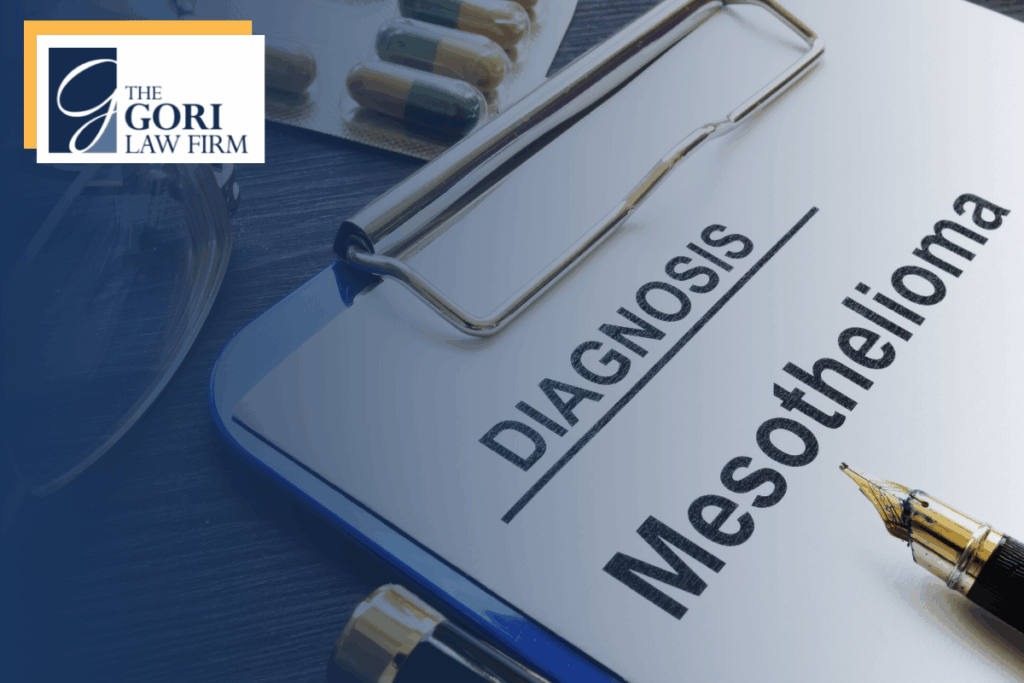Mesothelioma: Causes and Risk Factors
Finding out that you or someone close to you has mesothelioma can turn your world upside down. Understanding what causes mesothelioma and the factors that raise the risk can make a big difference. This knowledge helps you feel a little more grounded, offers families a clearer picture of what they’re facing, and opens the door to ways of protecting your health and your rights moving forward.

Home » Nationwide Mesothelioma Lawyers » Mesothelioma: Causes and Risk Factors
- Content last modified:
- Asbestos exposure is the only known cause of mesothelioma.
- Risk increases with prolonged and intense exposure, genetic predisposition, and certain underlying health conditions.
- Secondary exposure puts families at risk, not just workers.
- Early diagnosis leads to better treatment outcomes.
- Limiting exposure, following safety rules, and regular medical monitoring help reduce risks.
Mesothelioma is a rare but aggressive cancer most often linked to asbestos exposure. The Gori Law Firm helps victims of asbestos exposure seek justice and compensation for the harm they’ve suffered. In this guide, we’ll focus on what causes it, who is most at risk, and what you can do to reduce those risks.
Main Causes of Mesothelioma
The short answer is simple: asbestos exposure is the only known cause of mesothelioma. But the ways people encounter asbestos—and how it damages the body—are worth unpacking.
Asbestos Exposure
Asbestos is a naturally occurring mineral that was widely used in building materials, insulation, automotive parts, and countless other products throughout much of the 20th century. When asbestos fibers are disturbed, they can break apart into microscopic particles that hang in the air, making them easily inhaled or ingested.
Once inside the body, Asbestos fibers can lodge in the lining of the lungs, abdomen, or even the heart. Over time they cause scarring and cellular damage which may lead to the development of mesothelioma.
Occupational Asbestos Exposure
For decades, specific jobs carried an exceptionally high risk of asbestos exposure. Construction workers, shipbuilders, miners, factory workers, and military veterans often encountered asbestos daily.
Industries such as shipyards, power plants, manufacturing, and construction were notorious for their heavy use of asbestos-containing products. Workers in these settings often faced the most significant dangers.
Secondary Asbestos Exposure
It wasn’t only the workers themselves who were at risk. Family members could also be exposed when asbestos fibers clung to clothing, skin, or hair and were carried into the home. Wives washing uniforms or children hugging their fathers after a shift often faced what’s called secondary exposure.
Risk Factors for Developing Mesothelioma
While asbestos exposure is the root cause, certain factors can increase the likelihood of developing mesothelioma.
Duration and Intensity of Asbestos Exposure
The more someone is exposed to asbestos—and the longer it continues—the greater the risk. But many people will only face a diagnosis decades after their first contact with asbestos. With an unusually long latency period, Mesothelioma can often take 20 to 60 years to develop after exposure.
Genetic Factors
Not everyone exposed to asbestos develops mesothelioma. Researchers have discovered that genetics plays a role, particularly mutations in the BAP1 gene. This gene is involved in suppressing tumor growth, and people with this inherited change are more vulnerable to asbestos-related cancers, even with lighter exposure. However, it’s important to note that having this genetic mutation does not guarantee the development of mesothelioma, and many people with the mutation never develop the disease.
Age and Gender
Most mesothelioma cases occur in older adults, primarily due to the disease’s long latency period. Men are diagnosed more often than women, which reflects past occupational exposure—men historically dominated industries where asbestos use was widespread.
Pre-existing Lung Conditions
Individuals with conditions such as chronic obstructive pulmonary disease (COPD) or other respiratory illnesses may have an increased risk. Damaged lungs are more susceptible to the effects of asbestos fibers and less capable of handling the inflammation they cause.
Smoking
Smoking by itself does not cause mesothelioma. When combined with asbestos exposure, smoking significantly increases the risk of developing lung cancer. Family history and other health conditions can also influence risk, which makes lifestyle choices like avoiding tobacco important for protecting overall lung health.
You may be eligible for significant compensation that The Gori Law Firm can fight for on your behalf.
Diagnosing Mesothelioma
Medical Tests and Imaging
At first, the signs of mesothelioma may resemble other common health issues, such as chest pain, a persistent cough, or shortness of breath, making it tricky to diagnose. Over time, symptoms like unexplained weight loss, feeling unusually tired, or trouble swallowing may arise and worsen. If you’ve ever been around asbestos and notice these kinds of changes, it’s essential to check in with your doctor. They may order scans, such as chest X-rays, CT scans, and sometimes a biopsy, to determine the cause.
Why Early Diagnosis Is Critical
The earlier mesothelioma is detected, the better the treatment options will be. While there’s currently no cure, catching the disease sooner can mean more effective therapies and improved quality of life.
Early diagnosis also gives patients access to clinical trials and specialized treatments that may not be available for advanced cases. Because the symptoms often mimic less severe conditions, people with a history of asbestos exposure should share that information with their doctors. If symptoms appear, anyone who knows they’ve been exposed to asbestos should talk to a doctor—even if years have passed since the exposure. This can make the difference between catching mesothelioma at a manageable stage versus facing limited options.
How to Reduce the Risk of Mesothelioma
While asbestos isn’t banned entirely, there are steps you can take to reduce your risk of exposure and developing mesothelioma.
Limiting Asbestos Exposure
Following safety protocols is imperative for workers in asbestos-adjacent industries. Using protective gear, avoiding tasks that generate dust whenever possible, and following proper cleanup protocols are essential to minimize exposure.
Homeowners should also be cautious. Many older houses still contain asbestos in insulation, flooring, or siding. If you suspect asbestos is present, don’t try to remove it yourself—hire a licensed professional trained in safe handling.
Government Regulations
Agencies like the Environmental Protection Agency (EPA) and the Occupational Safety and Health Administration (OSHA) enforce strict safety standards to protect workers and regulate the use of asbestos in the United States.
OSHA requires employers to monitor asbestos levels in workplaces, provide protective equipment, and train workers on safe handling procedures. The EPA regulates asbestos in schools, public buildings, and certain products. However, unlike many other countries, the U.S. has never fully banned asbestos. This means the risk of exposure persists in older buildings and certain imported goods.
For homeowners and businesses, it’s critical to hire certified asbestos abatement professionals rather than attempting removal on your own. Mishandling asbestos can actually increase your risk of exposure. Stronger awareness and enforcement of these regulations are essential in protecting workers and the general public.
Medical Monitoring for At-Risk Individuals
If you’ve been exposed to asbestos, routine medical checkups can make all the difference in monitoring and diagnosing symptoms as early as possible. Doctors may recommend imaging scans or pulmonary function tests. Staying proactive with health screenings gives you the best chance of catching warning signs before they progress.
Take Action Now
Understanding the risks and causes of mesothelioma can help families protect themselves, advocate for earlier medical care, and explore their legal options, such as filing a lawsuit against the companies responsible for asbestos exposure, which can provide financial compensation to cover medical expenses and other losses.
If you or a loved one has been diagnosed with mesothelioma, don’t wait. Contact Gori Law today or call 618-659-9833 for a free, confidential consultation. Our attorneys have decades of experience fighting for justice in asbestos-related cases.
Time matters in these cases. Secure the compensation you deserve and protect your family’s future—reach out today.
Contact Us Today
Get your free case review 24 hours a day.
Fields marked with an * are required
CASE RESULTS










